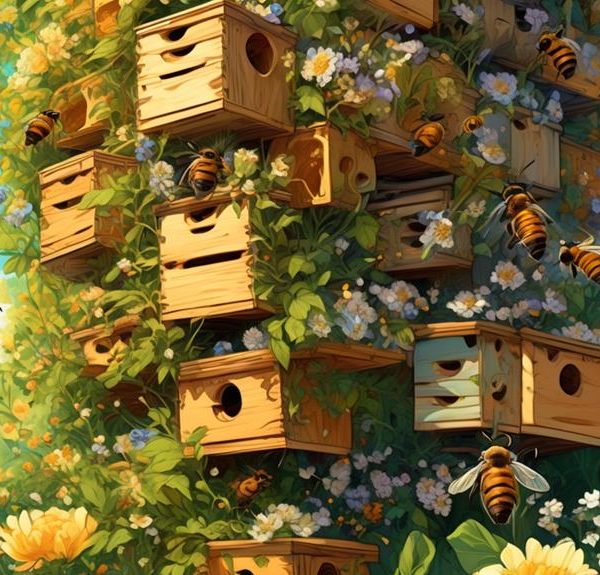Pondering the perplexities of mason bee cocoon care in winter? Uncover surprising insights that may challenge your preconceptions.
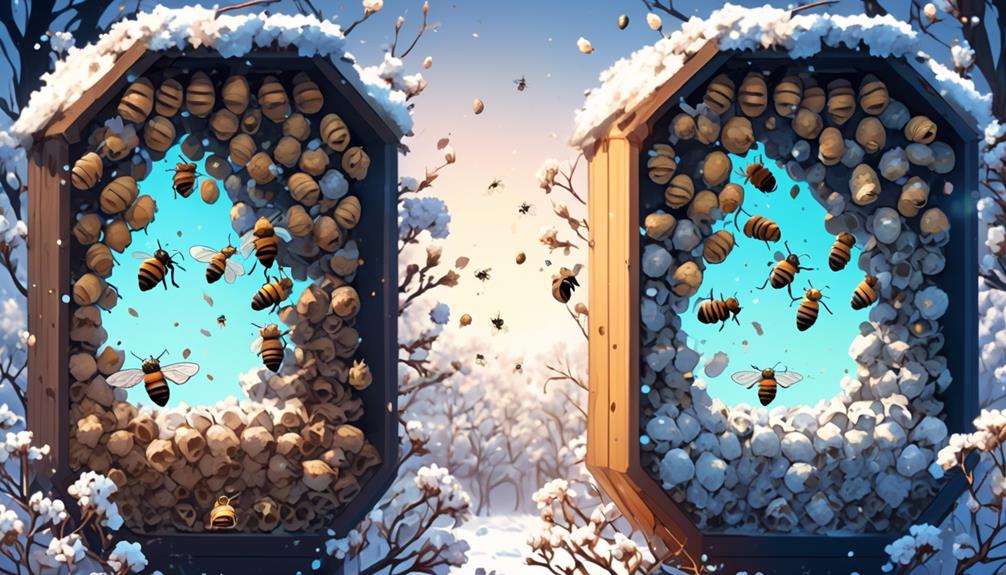
Do Mason Bee Cocoons Need to Be Removed Before Winter?
As a bee enthusiast, you appreciate their role in our ecosystem, you understand their nature, and you're keen to provide optimal care for these industrious workers.
But when it comes to the topic of mason bees, questions arise that challenge the norms—particularly, the issue of whether mason bee cocoons need to be removed before winter.
While it's a common belief that bee cocoons should be left untouched, some claim that removing them prior to the cold months can actually enhance the colony's survival rate.
So, how can you be certain what's best for your buzzing friends? Stick around, because this discussion might just make you question everything you thought you knew about mason bees.
Key Takeaways
- Mason bee cocoons serve as protective shelters for developing bees during winter.
- Cocoons provide insulation and temperature regulation against harsh winter elements.
- Cocoons preserve energy reserves, allowing bees to hibernate and survive until spring.
- Monitoring cocoons for infestations is crucial for the survival of the colony.
Understanding Mason Bee Lifecycle
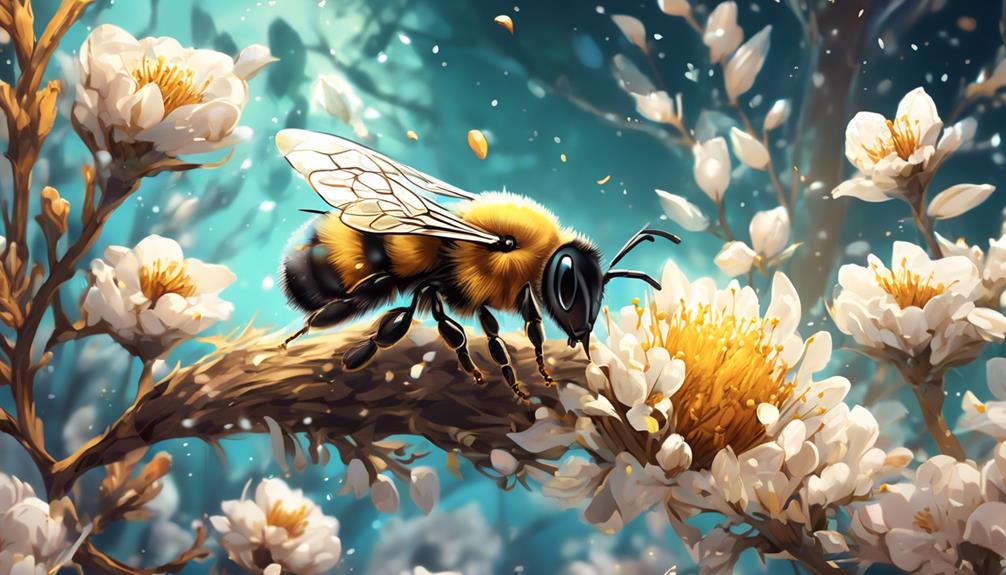
To fully appreciate the need for removal of Mason bee cocoons before winter, you've got to understand their fascinating lifecycle. Mason bees, unlike their honeybee counterparts, are solitary insects. They don't live in hives but create individual nests in pre-existing holes.
Your journey with Mason bees typically begins in early spring when adult females emerge from their cocoons, mate, and start looking for nesting sites. After finding a suitable location, they collect pollen and nectar, form it into a ball, and lay an egg on it. This nutrient-rich ball is the future larva's food source. The mother bee then seals the chamber with mud, hence their name, Mason bees.
Throughout summer, the egg hatches into a larva, eats the food provided, and spins a cocoon around itself. Inside this cocoon, the larva transforms into an adult bee, which overwinters in a dormant state. Come next spring, the cycle begins anew.
Understanding this lifecycle, you can see why it's crucial to remove and store cocoons safely during winter. It protects the next generation of bees from predators, parasites, and harsh weather conditions.
Importance of Cocoons in Winter
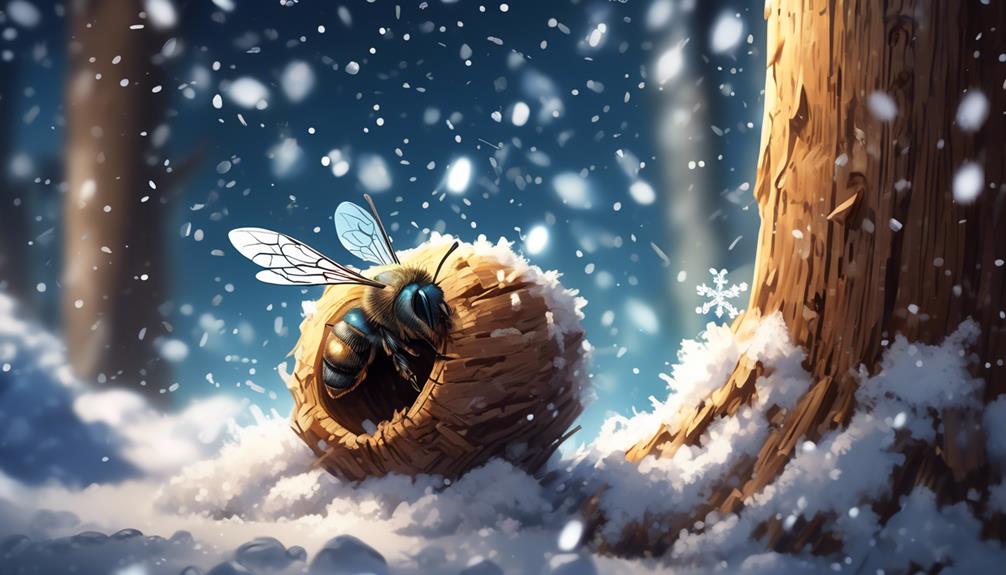
Building on this understanding of the Mason bee's lifecycle, let's now explore why their cocoons are so important during winter.
The cocoon serves as a protective shelter for the developing bees as they transition from larvae to adults. During winter, when food sources are scarce and temperatures drop, these cocoons are critical for their survival.
The cocoon provides an insulated environment that shields the developing bees from the harsh winter elements. It's their own personal fortress, complete with temperature regulation and a defense against potential predators.
Furthermore, the cocoon also preserves their energy reserves, allowing them to hibernate and survive until spring when food becomes abundant again.
However, it's worth noting that cocoons can accumulate pests and diseases over time. These harmful conditions may impede the healthy development of the bees and can decimate an entire colony if left unchecked. Hence, it's crucial to monitor the cocoons for any signs of infestations and take appropriate measures if necessary.
Steps to Remove Mason Bee Cocoons
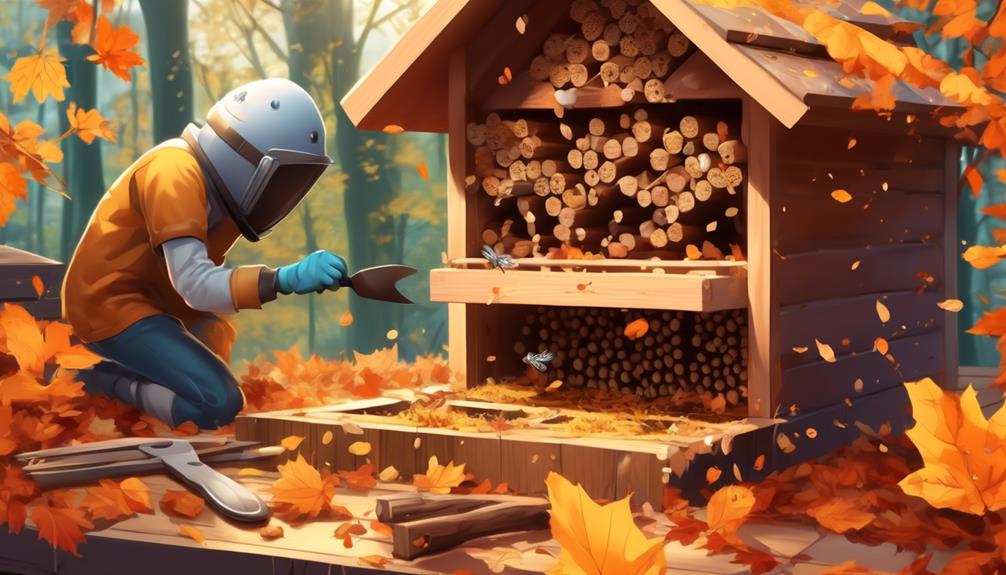
Before you brave the cold and embark on the task of removing Mason bee cocoons, it's crucial to understand the careful, step-by-step process required to ensure the preservation of these essential pollinators. Here's how to safely do it.
Firstly, you'll need a butter knife or similar tool. Gently scrape the cocoons from the bee house, avoiding any forceful actions that could harm the larvae. Collect them in a bowl.
Your second step is to wash the cocoons. Fill the bowl with cool water and gently stir to remove any dirt or parasites. Replace the water and repeat until it's clear. Then, place the cocoons on a towel to dry.
Next, you'll want to inspect the cocoons for any signs of disease or parasites. Healthy cocoons are dark and firm, while infected ones may appear discolored or have tiny holes. Discard any that look suspicious.
Alternative Wintering Options
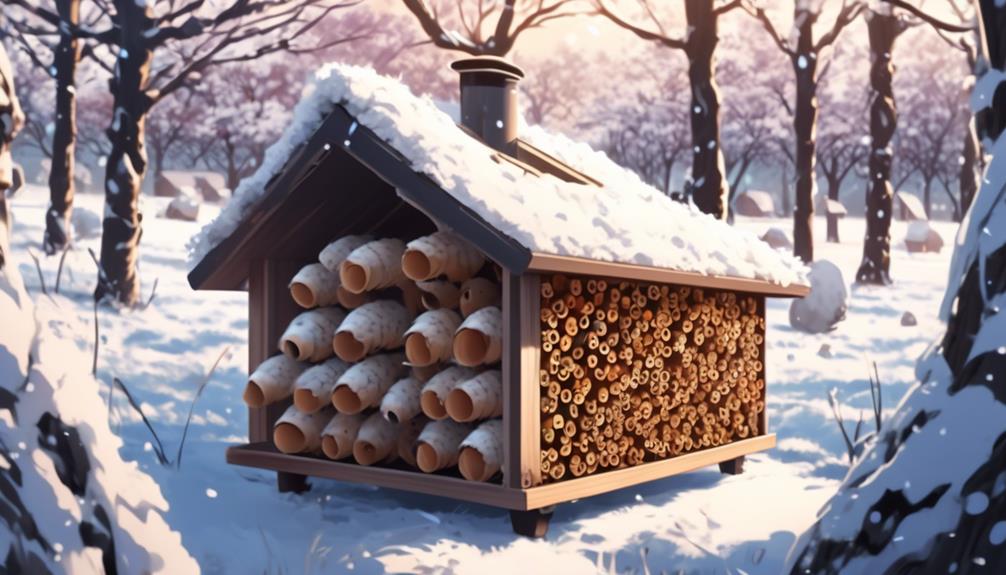
If storing cocoons in the fridge isn't your preference, there are other wintering options you can consider for your Mason bees. One viable alternative is to leave the cocoons in their nesting tubes. The bees naturally constructed their nests to withstand winter conditions. This option requires minimal effort on your part, but it does pose risks of predatory attacks and disease.
You could also store the cocoons in an unheated garage or shed. This provides a more controlled environment than outside, reducing the risk of predators and disease. However, it's crucial to maintain a cool temperature, ideally between 34°F and 40°F, and to provide ventilation to prevent mold growth.
Another option is a 'bee condo', a specially designed structure with compartments for the cocoons to safely overwinter. It's an investment, but it provides optimal protection and easy observation.
Regardless of the method you choose, it's important to remember that Mason bees are cold-climate insects. They need a period of cold dormancy to complete their life cycle. So, while you're trying to protect them from harsh winter conditions, be careful not to make it too warm. Finding the right balance is key to successfully wintering your Mason bees.
Best Practices for Mason Bee Care
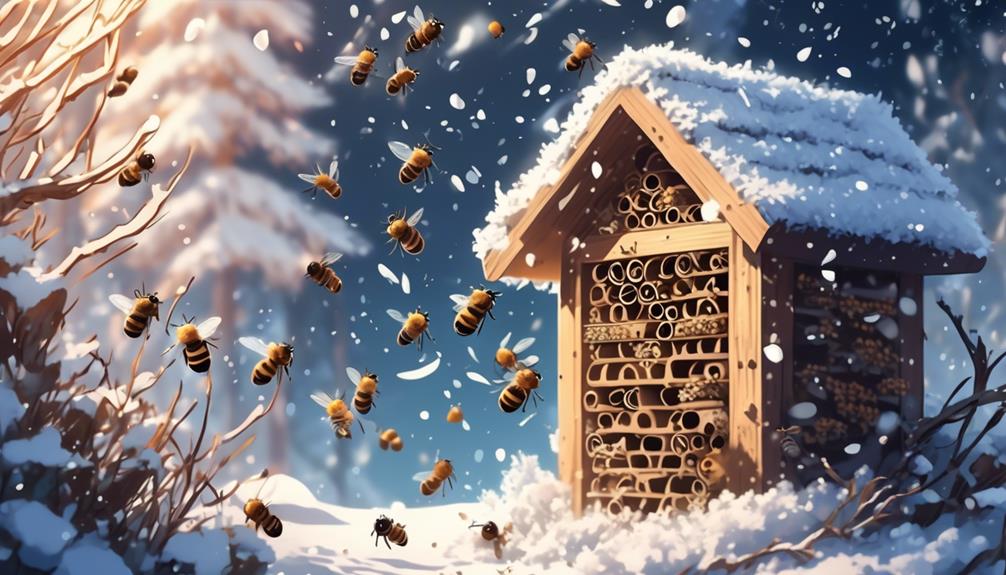
While finding the perfect wintering solution is vital, there's more to Mason bee care than just ensuring they survive the cold season. Regular maintenance of their habitat is equally important. Clean the nesting tubes or blocks regularly to prevent mites and molds from infesting. Parasites can considerably reduce your Mason bee population if left unchecked.
You should also provide a constant source of mud for your Mason bees. They use it to construct their nests and seal the eggs inside. If there's no mud, they mightn't nest at all. The mud needs to be loamy and easily moldable, not too sandy or clayey.
Another crucial aspect of Mason bee care is the provision of flowering plants. Mason bees are solitary pollinators and need a constant source of nectar and pollen. Plant a variety of native flowering plants that bloom at different times to provide a continuous food source.
Lastly, always remember to harvest the cocoons in the late fall. This isn't just to protect them from the cold but also to get rid of any parasites. Mason bee care is an ongoing commitment, but it's deeply rewarding to see your bees thrive.
Conclusion
In conclusion, you don't necessarily need to remove mason bee cocoons before winter. These cocoons play a crucial role in their lifecycle, especially during winter.
However, if you choose to remove them, make sure to follow the right steps. Alternatively, you can explore other wintering options.
Remember, the health and survival of your mason bees depend on your care. So, stick to best practices and ensure your bees thrive.


